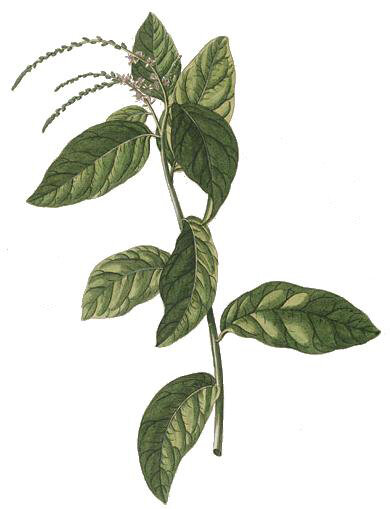by Brandon Ruiz
I got out of the car with my abuela and walked into the yard of the home my mother grew up in in Guaynabo, PR in Barrio. We came because the carambola tree was full of ripe fruits we needed to harvest. I hadn’t been to this home in years, and some aspects of it looked as I remembered them, others not so much. She mentions the large tree that used to be in front of the house was knocked over during Hurricane Maria, along with the avocado tree by the back porch. We climbed down a small slope to the carambola tree, loaded with fruits and we started to pick them, shaking the ants off before they could bite us. A family friend renting out part of the house came out to greet us, and we gave her some of our harvest. While my abuela and her spoke, I climbed back up the slope to see the spot the large tree in front used to be in. Covering the ground were different types of opportunistic plants, cundeamor, Juana La Blanca and more. I noticed another plant with small white flowers taller than the rest, and got on the ground to look at it and rub and smell the leaves. They smelled of burnt rubber, garlic and seafood, a shock to my senses after eating so many sweet and tart carambolas moments before. I brought a handful of leaves and twigs down the slope, where they both told me it was anamu (Petiveria Alliaceae) and grows all over the area. My abuela used it in rum for colds. She’s also used the leaves mixed with berenjena cimarrona (Solanum torvum) as an external wash for fungal infections on the skin, namely athlete’s foot. This was my introduction to anamu and later on this same trip I would make medicine with it alongside poleo (Lippia alba).
Names: Latin - Petiveria alliacea (Phytolaccaceae); Anamu (Dominican Republic, Puerto Rico); Tipi (Brazil); Guinea Hen Weed, Garlic Weed (Jamaica); Mapurite, Gully Root (Trinidad); Apacin (Guatemala); Mucura (Peru)
Description/Taxonomy: Guinea hen weed is a small herbaceous shrub with simple, glabrous spirally arranged leaves. It has determinate inflorescences which become small green fruits with deflex bristles at the tip for seed dispersal.
Parts Used: Leaves, stems and roots are used. Roots are considered stronger than aerial parts.
History/Ethnobotany: For Physical Use: Anamu’s most common uses are for treating headaches, fevers and colds. Longer term usages include regulating blood sugar and blood pressure. As a powerful antimicrobial and antifungal, it’s been used in baths and rinses for fungal infections on the skin, and internally for urinary tract infections. The crushed leaves were also used to apply to cuts and wounds. As a sedative, anamu has been combined with other plants for hysteria and spasms, and it has been used as a pain-reliever as well. Traditionally, rum has been a vehicle for anamu’s medicine and shots of the infused rum are taken, and have also been applied externally as a liniment for muscle pains and headaches.
For Spiritual Use: In Afro-Costa Rican tradition, I’ve seen anamu grown outside of the door to ward away spirits. Similarly in Caribbean culture, the aromatic leaves would be scattered in a room to keep away duppies (unfriendly spirits in traditional belief systems of the Caribbean).
Environmental Significance: Anamu loves to grow in disturbed areas, alongside parking lots, on forest edges and on the sidewalk. Goats and some livestock like to eat it as well, but it’s said their milk can take on the garlic-like flavor and aroma from it. It spreads quickly but doesn’t choke out or suppress other plants’ growth.
Cultivation and Harvesting: Guinea hen weed is rarely seen in cultivation, however can be done with a simple scattering of seeds. I’m in Charlotte, NC (Zone 7b/8a) and am experimenting with cultivating it here this year. The plant grows fast and likes partial shade, and can adapt to most soils. When harvesting, the entire plant is usually harvested. Being that anamu grows so prolifically, it’s usually alright to pull the entire plant out, and if you’d like you can scatter the seeds into the space and it will come right back. If you’re looking for milder medicine from the leaves and stems, you can cut halfway up the plant and it will stimulate new growth soon after.
Energetics: Most tend to agree that anamu has a very warming and stimulating energy. This can be attributed to the very pungent and garlic-like aroma of the crushed plant parts.
Organ Affinities: Anamu has an affinity to the digestive system, the urinary tract and reproductive organs. I personally feel it acts on many more but see these as the main organs affected by anamu.
Illustratio systematis sexualis Linnaeani
Francofurti ad Moenum, Varrentrapp et Wenner, 1789.
Constituents: Benzaldehyde, benzoic acid, coumarin, dibenzyl trisulfide (roots), nerolidol.
Medicinal Actions: Anti-microbial, anti-fungal, anxiolytic, immunostimulant, diuretic, diaphoretic, hypoglycemic, anthelmintic, mild antispasmodic and analgesic.
Combining with other plants: I find combining anamu with more direct nervines like tulsi (Ocimum gratissimum) or skullcap (Scutellaria lateriflora) is best when using it for issues like anxiety or as a mild sedative. For external fungal issues, I like to make a wash of anamu leaves and cundeamor (Momordica charantia). The formulas can vary greatly depending on the situation, but I like to think of anamu as a powerful delivery method to add supporting herbs to.
Permaculture Use: Aside from livestock being able to graze on anamu (which as mentioned, can negatively affect the flavor of milk) there is not much I can foresee anamu being used for permaculture-wise. As it does spread easily, it could be allowed to grow wild and consistently harvested for medicine, simultaneously keeping it from spreading further.
Conservation and Considerations: Guinea hen weed is considered an invasive in many areas and spreads rapidly. I would say there’s no issue of conservation to keep in mind when harvesting, and many residents would rather see it out of their fields and yards and would gladly give you as much as you want.
Dosage, Preparations and Consumption: Anamu can be prepared in various ways, mostly as tea or tincture. The tincture and/or liniment can be made with rum, making a standard folk tincture using the roots of the plant. As a liniment it can be applied liberally onto the affected areas to help with localized pain and headaches. In tincture form, it’s good to take a decent amount (1-2 droppers full) for the plant’s full effect. It’s a medicine to take during illness multiple times in a day, and one that is easy to feel out as you take, because its effects tend to be felt quickly. A hot tea is also a good delivery method, usually with crushed leaves. Drink hot in most instances. The crushed leaves or rum infusion can be tossed into a bath taken for fever or body aches, with the plant material physically rubbed onto the affected areas. Without alcohol or materials for tea, the fresh root can be chewed, especially for localized oral pain. This process will taste a bit more intense but will deliver the medicine well. You can crush the leaves and put them into your nostrils for headache or sinus issues, or a poultice can be made and applied to the forehead, but if doing this it’s important you have somewhat of a liking to the smell of garlic and sulphur.
Accessibility: For those living in Northern climates, anamu may not grow in your region, but can be bought through online shops. It is found wild in Florida and Texas. If you’re in the tropics/in a region where it is found wild, anamu grows rapidly and in patches along roadsides, disturbed areas and in backyards.
Cautions and Contraindications: Anamu has hypoglycemic and hypotensive effects and has been historically used as an abortifacient, so should not be taken by pregnant individuals.
Personal Experience and Recommendations: The first medicine I made with anamu was a tincture filled with half P. Alliaceae and half poleo (Lippia alba). The two contrast each other, with poleo being a sweetly aromatic Verbenaceae plant used for headaches, upset stomach, and cold and flu symptoms and anamu being used for the same, but as a much stronger medicine. I took this tincture for acute headaches, head colds and sinus issues, making sure to double the dose for anything the anamu helps with most. Though I have made a tea from the leaves, nothing compares to simply chewing the roots or leaves, or a tincture. I feel its medicine is best delivered as concentrated as possible, and it will work its magic quick. I start to sweat and feel a bit groggy after taking anamu in high doses, and if you’re working to break a fever or knock out a head cold it’s best to take this in a warm bath filled with the herb and a few others like mint-family aromatics.
Want more herbal goodness?
🌼Sign up for the HerbRally newsletter and receive these THIRTEEN herbal freebies!
VIDEO | Most Vital Herb in David Hoffmann’s First-Aid Kit
WEBINAR | Herbal First Aid with Heather Irvine
EBOOK | 86 Page Plant Healer Book
30 DAYS FREE | HerbRally Schoolhouse
EBOOK | Calendula for Radiant Skin by Rosalee de la Forêt
VIDEO | 5 Herbal Events Around the World presented by Bevin Clare
BOOK DISCOUNT | The Essential Guide to Western Botanical Medicine
PRIVATE COMMUNITY | HerbRally Facebook Group
BOOK EXCERPT | 36 Pages from Plant Healer's "Nourishing Foods" Book
DISCOUNT | 15% off all Mountain Rose Herbs products
DISCOUNT | Mushroom Revival
AUDIO | Hour-long Adaptogens Class with Heather Irvine
DISCOUNT | 10% off all HerbRally products
👉 CLAIM YOUR FREEBIES!
Brandon Ruiz is a Holistic Herbalist, Permaculture Designer and Plant-Based Nutritionist who lives in Charlotte, NC. He specializes in studying and working with plant medicines from his native Puerto Rico and surrounding islands, and the Appalachian region.
https://onejamaicanvoice.blogspot.com/2011/08/traditional-jamaican-medicines-guinea.html
https://cabi.org/isc/datasheet/70236
https://en.wikipedia.org/wiki/Petiveria
https://globalhealingcenter.com/natural-health/harmful-organism-cleansing-health-benefits-anamu/
https://youtube.com/watch?v=77LzvVdHCOk&t=386s
https://arbolesdelchaco.blogspot.com/2012/04/pipi-anamu.html



